|
Printables |
PowerPoints |
Online exercises |
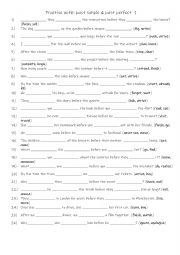
|
A2-B1 Practise with past simple & past perfect 1
Students should learn the past simple and past perfect because they are essential for discussing events in the past with clarity and accuracy. The past simple is used to describe completed actions or events that happened at a specific time (e.g., "She travelled to France last summer"), making it crucial for storytelling and recounting past experien...
Level: intermediate
Age: 10-100
Type:
Downloads: 117
|
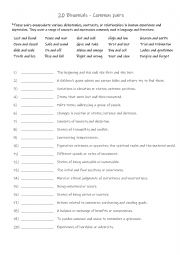
|
20 Binomials - Common pairs
Students match the binomials with their meanings.These pairs encapsulate various c, contrasts, or relationships in human experience and expression. They cover a range of concepts and expressions commonly used in language and literature. This worksheet is suitable for B1+-C1 level students.In addition to learning, this worksheet could be used as a w...
Level: advanced
Age: 14-100
Type:
Downloads: 103
|
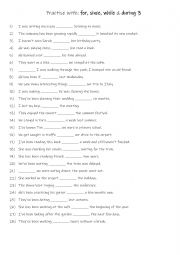
|
A2+-B1 Practise with for, since, while & during (3)
Learning to use for, since, during, and while is important because these words help student�s express time accurately in English, especially when talking about the duration and timing of events. For indicates the length of time an action takes place, while since pinpoints when an action started and continues until now, helping to show continuity. D...
Level: intermediate
Age: 9-100
Type:
Downloads: 100
|
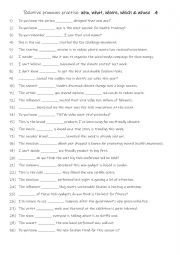
|
A1+-A2 Relative pronouns practise who, what, where, which & whose 4
Mastery of these pronouns also builds grammatical accuracy, making students more confident in formal and informal contexts. First, students need to familiarise themselves with the pronouns and their use. Then they read the sentences to see which one is needed to complete the sentence. Answers on page 2.
Level: elementary
Age: 8-100
Type:
Downloads: 113
|
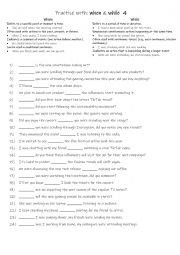
|
A2-B1 Practise with when & while 4
Students should learn when and while as they are essential for describing time relationships and creating complex sentences. When is used to pinpoint specific moments or sequences of events, such as "I heard a noise when I opened the door." While is used to describe actions happening at the same time, such as "She was singing while he was playing t...
Level: elementary
Age: 8-100
Type:
Downloads: 104
|
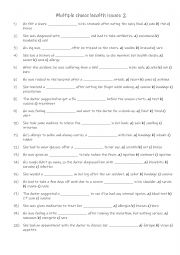
|
Multiple choice health issues 2
Students read the sentences and choose the correct word out of the given choices. Answers on page 2.
Level: elementary
Age: 10-100
Type:
Downloads: 112
|
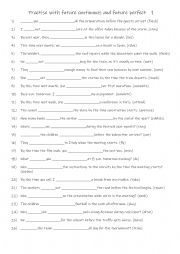
|
A2-B1 Practise with future continuous and future perfect 1
Students should practise the future continuous and future perfect because these tenses enable precise communication about future events. The future continuous describes ongoing actions at a specific time in the future, such as "I will be preparing dinner at 7 p.m. tomorrow," helping students discuss future activities in progress. The future perfect...
Level: elementary
Age: 9-100
Type:
Downloads: 115
|
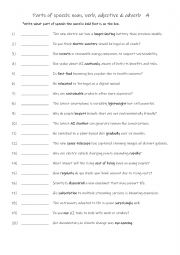
|
Parts of speech noun, verb, adjective & adverb 4
Learning parts of speech�nouns, verbs, adjectives, and adverbs�is essential because they are the foundation of English grammar. Mastering them helps students build grammatically correct sentences, communicate more effectively, expand their vocabulary, improve reading comprehension, and perform better in exams and writing tasks. Answers on page 2.
Level: elementary
Age: 8-100
Type:
Downloads: 153
|
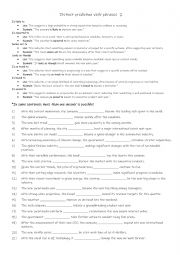
|
B1-B2 7 Distinct prediction verb phrases 2
These phrases help express different levels of certainty about future events. "Is likely to" suggests something will probably happen based on evidence, while "is expected to" refers to something predicted or planned. "Seems set to" indicates something is prepared to happen soon, and "looks as though" is used when something seems probable based on c...
Level: intermediate
Age: 10-100
Type:
Downloads: 121
|
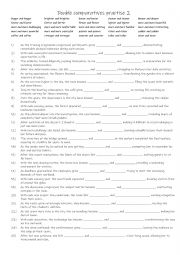
|
B1+-B2 25 Double comparatives Part 2
Double comparatives are used to describe a situation where something increases or decreases progressively. By repeating the comparative form, we emphasise how the quality or action becomes more extreme. This structure is common in English, and learning it can help express change in a dynamic and descriptive way. Native speakers use double comparati...
Level: intermediate
Age: 9-100
Type:
Downloads: 102
|
|
|
|
|












